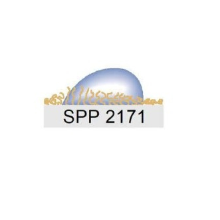The dynamic process of liquids that wet or dewet various substrates is not only ubiquitous in everyday life, but also of key importance in many technological applications. Prime examples in nature are plumages of birds that retain an insulating layer of air in wet conditions, or the superhydrophobicity of plant leaves. The mechanism by which carnivorous plants prey upon insects relies on an adaptation of their wettability to ambient conditions. In technology, all processes that involve lubrication, adhesives, or surface coatings, depend on the dynamics of wetting processes. Existing work mostly focuses on the influence of the topography and composition of rigid and inert substrates. Recent developments in areas like microelectronics or 3D printing have demonstrated a pressing need to also understand cases in which (de)wetting hydrodynamics and substrate dynamics are strongly coupled. This holds true especially on microscopic and mesoscopic length scales, where (non-)equilibrium surface phenomena dominate.
The project by Holger Steeb and Sabine Ludwigs is called
"Wetting on Patterned Adaptive Conducting Polymer Surfaces for Microfluidic Applications (PolySurf)"
The project “Wetting on Patterned Adaptive Conducting Polymer Surfaces for Microfluidic Applications (PolySurf)”, shall be implemented into current activities of the SPP 2171 on “Dynamic Wetting of Flexible, Adaptive and Switchable Surfaces”. PolySurf is based on the coupled interdisciplinary expertise of Sabine Ludwigs (polymer materials science, electrochemistry) and Holger Steeb (microfluidics, material modelling) and aims at hierarchically patterned soft surfaces which can adapt their wetting properties to externally applied electric fields. In addition to water contact angle measurements the fluid dynamics within microfluidic applications shall be explored. For adaptive surface preparation the class of conducting polymers (CPs) has been identified. CPs are gaining increasing interest for flexible actuator and sensor applications, and the interfaces of the CP polymer surfaces with liquids are extremely relevant in this context. Conducting polymers cannot only change their optical and electronic properties as function of the degree of doping, but also the wetting properties are highly influenced. In the literature extreme changes of the surface properties from superhydrophobic to superhydrophilic are reported between neutral and doped films.Within PolySurf a systematic understanding of the dynamic wetting behavior of the conducting polymer surfaces shall be established. On the materials science side both solution-processable films of poly(ethylenedioxythiophene):poly(styrenesulfonate) (PEDOT:PSS) as well as electropolymerized films from branched monomers shall be prepared. Surface patterning techniques involve imprint lithography and electropolymerisation on structured electrodes and are targeted at hierarchical patterning to increase the surface roughness.Characterization of the conducting polymer surfaces will involve systematic electrochemical studies in aqueous electrolytes alongside morphological and functional property analysis by absorption spectroscopy and conductivity measurements to determine the degree of doping.In terms of wetting characterization first systematic contact angle measurements (sessile droplet, advancing/ receding contact angles) will be performed. The focus lies on water and water/ion electrolytes. Surfaces with no potential and with potential applied (during in-situ electrochemical measurements) shall be monitored in terms of their wetting behavior. As complementary method spectroscopic ellipsometry will be used alongside to identify surface variations, e.g. by swelling, when the surfaces are brought in contact with the water and the aqueous electrolytes. This shall also give information about the adaptivity of the surfaces. Beyond the study of the dynamics of three phase contact lines on surfaces, the effect on evolving wetting properties on multi-phase fluid dynamics within microfluidic applications shall be explored. Ultimately, electrochemically-switchable microfluidic devices are envisioned.
"Wetting on Patterned Adaptive Conducting Polymer Surfaces for Microfluidic Applications (PolySurf)"
The project “Wetting on Patterned Adaptive Conducting Polymer Surfaces for Microfluidic Applications (PolySurf)”, shall be implemented into current activities of the SPP 2171 on “Dynamic Wetting of Flexible, Adaptive and Switchable Surfaces”. PolySurf is based on the coupled interdisciplinary expertise of Sabine Ludwigs (polymer materials science, electrochemistry) and Holger Steeb (microfluidics, material modelling) and aims at hierarchically patterned soft surfaces which can adapt their wetting properties to externally applied electric fields. In addition to water contact angle measurements the fluid dynamics within microfluidic applications shall be explored. For adaptive surface preparation the class of conducting polymers (CPs) has been identified. CPs are gaining increasing interest for flexible actuator and sensor applications, and the interfaces of the CP polymer surfaces with liquids are extremely relevant in this context. Conducting polymers cannot only change their optical and electronic properties as function of the degree of doping, but also the wetting properties are highly influenced. In the literature extreme changes of the surface properties from superhydrophobic to superhydrophilic are reported between neutral and doped films.Within PolySurf a systematic understanding of the dynamic wetting behavior of the conducting polymer surfaces shall be established. On the materials science side both solution-processable films of poly(ethylenedioxythiophene):poly(styrenesulfonate) (PEDOT:PSS) as well as electropolymerized films from branched monomers shall be prepared. Surface patterning techniques involve imprint lithography and electropolymerisation on structured electrodes and are targeted at hierarchical patterning to increase the surface roughness.Characterization of the conducting polymer surfaces will involve systematic electrochemical studies in aqueous electrolytes alongside morphological and functional property analysis by absorption spectroscopy and conductivity measurements to determine the degree of doping.In terms of wetting characterization first systematic contact angle measurements (sessile droplet, advancing/ receding contact angles) will be performed. The focus lies on water and water/ion electrolytes. Surfaces with no potential and with potential applied (during in-situ electrochemical measurements) shall be monitored in terms of their wetting behavior. As complementary method spectroscopic ellipsometry will be used alongside to identify surface variations, e.g. by swelling, when the surfaces are brought in contact with the water and the aqueous electrolytes. This shall also give information about the adaptivity of the surfaces. Beyond the study of the dynamics of three phase contact lines on surfaces, the effect on evolving wetting properties on multi-phase fluid dynamics within microfluidic applications shall be explored. Ultimately, electrochemically-switchable microfluidic devices are envisioned.
SPP 2171 - Dynamic Wetting of Flexible, Adaptive, and Switchable Surfaces


